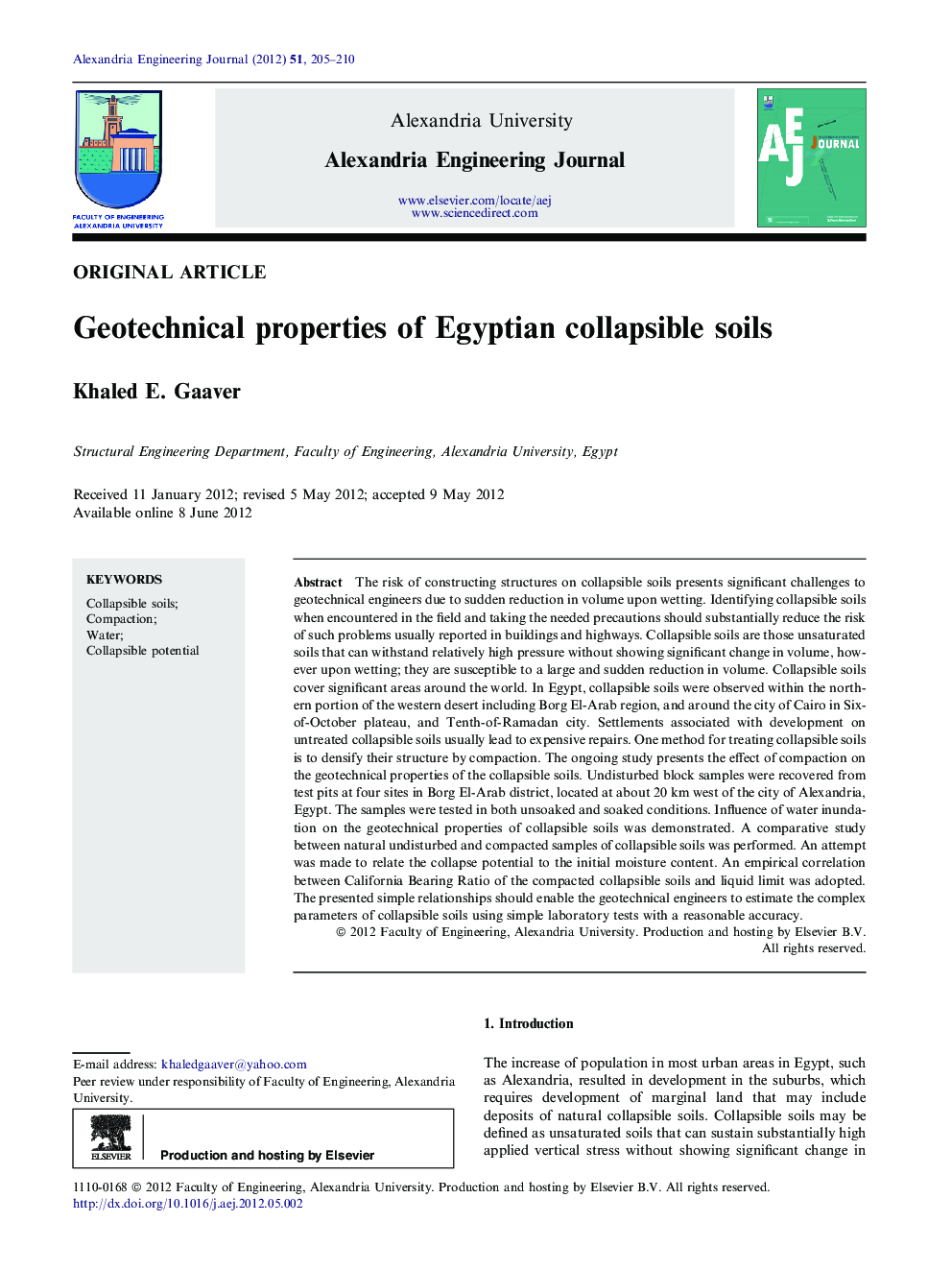| Article ID | Journal | Published Year | Pages | File Type |
|---|---|---|---|---|
| 816366 | Alexandria Engineering Journal | 2012 | 6 Pages |
Abstract
The risk of constructing structures on collapsible soils presents significant challenges to geotechnical engineers due to sudden reduction in volume upon wetting. Identifying collapsible soils when encountered in the field and taking the needed precautions should substantially reduce the risk of such problems usually reported in buildings and highways. Collapsible soils are those unsaturated soils that can withstand relatively high pressure without showing significant change in volume, however upon wetting; they are susceptible to a large and sudden reduction in volume. Collapsible soils cover significant areas around the world. In Egypt, collapsible soils were observed within the northern portion of the western desert including Borg El-Arab region, and around the city of Cairo in Six-of-October plateau, and Tenth-of-Ramadan city. Settlements associated with development on untreated collapsible soils usually lead to expensive repairs. One method for treating collapsible soils is to densify their structure by compaction. The ongoing study presents the effect of compaction on the geotechnical properties of the collapsible soils. Undisturbed block samples were recovered from test pits at four sites in Borg El-Arab district, located at about 20Â km west of the city of Alexandria, Egypt. The samples were tested in both unsoaked and soaked conditions. Influence of water inundation on the geotechnical properties of collapsible soils was demonstrated. A comparative study between natural undisturbed and compacted samples of collapsible soils was performed. An attempt was made to relate the collapse potential to the initial moisture content. An empirical correlation between California Bearing Ratio of the compacted collapsible soils and liquid limit was adopted. The presented simple relationships should enable the geotechnical engineers to estimate the complex parameters of collapsible soils using simple laboratory tests with a reasonable accuracy.
Keywords
Related Topics
Physical Sciences and Engineering
Engineering
Engineering (General)
Authors
Khaled E. Gaaver,
